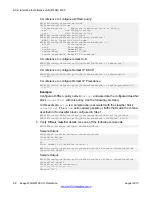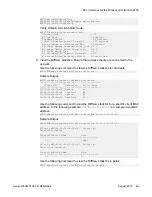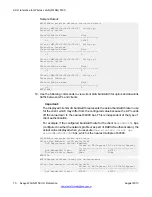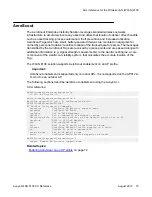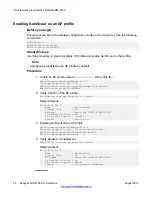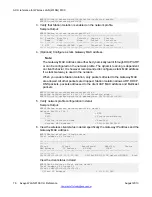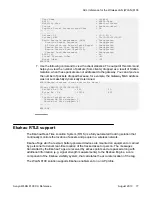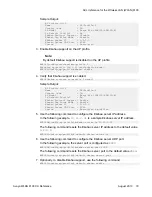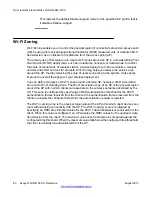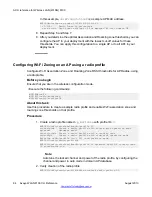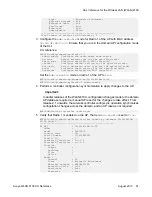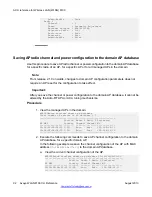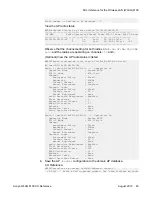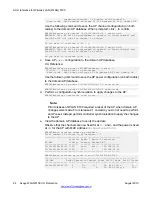
This restores the default Ekahau support mode for the specified AP profile, that is,
it disables Ekahau support.
Wi-Fi Zoning
Wi-Fi Zoning enables you to control the physical region of connectivity around an access point
(AP) by using the received signal strength indicator (RSSI) measurements of a clients 802.11
transmission, as an indicator of its distance from the access point (AP).
The primary use of this feature is to create Wi-Fi zones around an AP in a crowded Bring Your
Own Device (BYOD) deployment, such as in stadiums, hot-spots or trade-shows, to restrict
the scale of connectivity of wireless clients. A dense deployment can overwhelm a wireless
network and affect services for all users. Wi-Fi Zoning helps you reduce the service area
around the AP, thereby reducing the scale of users connecting to the system. It also helps
improve the overall throughput of your wireless deployment.
You can define two types of Wi-Fi zones around a domain AP, namely a
Wi-Fi Association
Zone
and a
Wi-Fi Roaming Zone
. The
Wi-Fi association zone
of an AP is the physical region
around the AP within which clients can associate to the wireless networks advertised by the
AP. This zone is configured by specifying an RSSI authentication threshold for the 802.11
authentication frames received from the clients. If the authentication frames received from the
clients are below the configured threshold, the authentication request is rejected.
The
Wi-Fi roaming zone
is the physical region around the AP within which client devices can
roam without losing connectivity with the AP. The Wi-Fi roaming zone is configured by
specifying an RSSI drop threshold value for the 802.11 data transmissions received from the
client. When this value is configured, an AP samples the RSSI values for the upstream data
transmission from the client. The maximum value over 64 samples is compared against the
configured drop threshold. When the maximum value falls below the configured drop threshold,
the client is explicitly de-authenticated from the AP.
ACLI reference for Wireless LAN (WLAN) 8100
80 Avaya WLAN 8100 CLI Reference
August 2013
Содержание WLAN 8100 Series
Страница 1: ...Avaya WLAN 8100 CLI Reference Release 2 1 0 NN47251 107 Issue 05 02 August 2013 ...
Страница 4: ...4 Avaya WLAN 8100 CLI Reference August 2013 Comments infodev avaya com ...
Страница 6: ...6 Avaya WLAN 8100 CLI Reference August 2013 ...
Страница 12: ...Overview of WLAN deployment solutions 12 Avaya WLAN 8100 CLI Reference August 2013 Comments infodev avaya com ...
Страница 144: ...ACLI reference for Wireless LAN WLAN 8100 144 Avaya WLAN 8100 CLI Reference August 2013 Comments infodev avaya com ...
Страница 376: ...ACLI Reference for wired networks 376 Avaya WLAN 8100 CLI Reference August 2013 Comments infodev avaya com ...
Страница 382: ...Supported Country Codes 382 Avaya WLAN 8100 CLI Reference August 2013 Comments infodev avaya com ...

